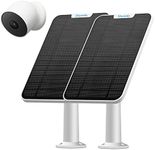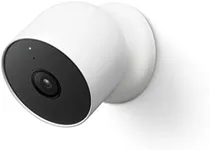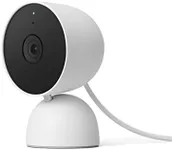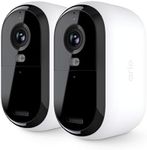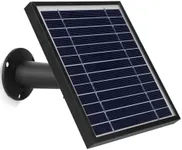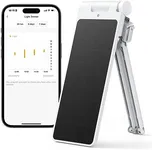Buying Guide for the Best Nest Compatible Cameras
When choosing a Nest-compatible camera, it's important to consider several key specifications to ensure you get the best fit for your needs. Nest-compatible cameras are designed to integrate seamlessly with the Nest ecosystem, providing enhanced security and smart home functionality. To make an informed decision, you should understand the importance of each specification and how it aligns with your specific requirements.ResolutionResolution refers to the clarity and detail of the video captured by the camera. Higher resolution cameras provide clearer and more detailed images, which can be crucial for identifying faces or license plates. Common resolutions include 720p (HD), 1080p (Full HD), and 4K (Ultra HD). If you need to monitor large areas or require detailed footage for security purposes, a higher resolution camera is recommended. For general home monitoring, 1080p is usually sufficient.
Field of ViewField of view (FOV) indicates the width of the area the camera can capture. A wider FOV means the camera can cover more area, which is useful for monitoring large spaces with fewer cameras. FOV is typically measured in degrees, with common values ranging from 90° to 180°. If you need to cover a wide area, such as a backyard or a large room, opt for a camera with a wider FOV. For smaller spaces, a narrower FOV may be adequate.
Night VisionNight vision allows the camera to capture clear video in low-light or no-light conditions. This feature is essential for 24/7 monitoring, especially in areas that are not well-lit at night. Night vision capabilities are usually measured by the distance the camera can see in the dark, often ranging from 20 feet to 100 feet. If you need to monitor areas during nighttime, ensure the camera has good night vision capabilities. For indoor use or well-lit areas, night vision may be less critical.
Two-Way AudioTwo-way audio enables you to communicate through the camera using a built-in microphone and speaker. This feature is useful for interacting with visitors, deterring intruders, or communicating with family members. If you plan to use the camera for security purposes or to monitor and communicate with people at your door, two-way audio is a valuable feature. For simple monitoring without interaction, this feature may not be necessary.
Power SourceCameras can be powered either by batteries or through a wired connection. Battery-powered cameras offer flexibility in placement and are easier to install, but they require regular battery changes or recharging. Wired cameras provide a constant power supply and are more reliable for continuous monitoring, but they require more complex installation. Choose a power source based on your preference for ease of installation and maintenance. For long-term, uninterrupted use, wired cameras are preferable.
Storage OptionsStorage options determine how and where your video footage is saved. Cameras can offer local storage (using SD cards) or cloud storage. Local storage is limited by the capacity of the storage device, while cloud storage provides more space and accessibility from anywhere. However, cloud storage often requires a subscription. If you need easy access to your footage from multiple devices and don't mind a subscription fee, cloud storage is ideal. For more control over your data and no ongoing costs, local storage is a good option.
Smart FeaturesSmart features include motion detection, person detection, and integration with other smart home devices. These features enhance the functionality of the camera by providing alerts, automating actions, and improving security. Motion detection can notify you of any movement, while person detection can differentiate between people and other objects. If you want a camera that integrates well with your existing smart home setup and provides advanced security features, look for models with these smart capabilities. For basic monitoring, these features may be less critical.


